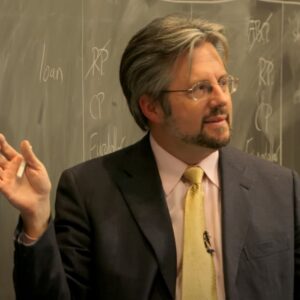
- This project has passed.
The Economics of Money and Banking Course by Perry Mehrling (Ivy 2.0)
Course
Start time:
October 26, 2020 - December 30, 2020
EDT
Location:
Ivy 2.0, New York, New York
Type:
Workshop

Local Partners
Description
Instructors: Asgeir B. Torfason and Elham Saeidinezhad
Teaching Assistants: Jack Krupinski, Andrew McVay
Teaching Assistants with YSI focus: Nathalie Marins, Adam Kerenyi
Prospective start date: 27 October, 2020
Deadline to sign up: 20 October, 2020
Overview of the course
This course develops the 'money view' of economic activity for modern times, building on the intellectual traditions of British central banking and American institutionalism. It explores the economics of payment systems, money markets, foreign exchange and capital markets.
Introduction to the principles of money and banking, the intermediary institutions of the American economy and their historical development, the principal financial instruments of the money market, current issues in monetary and financial reform.
Students who complete this course will learn how to:
1) Read, understand, and evaluate professional discourse about the current operation of money markets at the level of the Financial Times
2) Follow an argument/analysis that uses balance sheet reasoning
3) Construct an argument/analysis that uses balance sheet reasoning
4) Use diverse primary historical texts to understand current events
5) Understand the institutional structure of the dollar money markets, their connection to capital markets, and the mechanisms of central bank control
The last three or four decades have seen a remarkable evolution in the institutions that comprise the modern monetary system. The financial crisis of 2007-2009 is a wakeup call that we need a similar evolution in the analytical apparatus and theories that we use to understand that system. Produced and sponsored by the Institute for New Economic Thinking, this course is an attempt to begin the process of new economic thinking by reviving and updating some forgotten traditions in monetary thought that have become newly relevant.
Three features of the new system are central.
Most important, the intertwining of previously separate capital markets and money markets has produced a system with new dynamics as well as new vulnerabilities. The financial crisis revealed those vulnerabilities for all to see. The result was two years of desperate innovation by central banking authorities as they tried first this, and then that, in an effort to stem the collapse.
Second, the global character of the crisis has revealed the global character of the system, which is something new in postwar history but not at all new from a longer time perspective. Central bank cooperation was key to stemming the collapse, and the details of that cooperation hint at the outlines of an emerging new international monetary order.
Third, absolutely central to the crisis was the operation of key derivative contracts, most importantly credit default swaps and foreign exchange swaps. Modern money cannot be understood separately from modern finance, nor can modern monetary theory be constructed separately from modern financial theory. That's the reason this course places dealers, in both capital markets and money markets, at the very center of the picture, as profit-seeking suppliers of market liquidity to the new system of market-based credit.
The course is structured around weekly discussion classes based on the on-line video lectures and the reading material.
The course will discuss events from the last few years also.
Instructors
Prof. Asgeir B. Torfason participated in some of the classes on-site at Barnard College in New York during autumn 2012 when the course was recorded. Asgeir took the course the online when was first available in the summer of 2013. Then, during the second run, he was a Teaching Assistant for the online course. The third online version of the course in 2015 provided the foundation for teaching the online course for the first time on campus in Europe as part of an educational development project. During the autumns of 2016, 2017, and 2018 Asgeir taught the course at the University of Iceland using the online material. Asgeir obtained his Ph.D from the University of Gothenburg, Sweden, in Finance and Accounting in 2014.
Prof. Elham Saeidinezhad is Term Assistant Professor of Economics at Barnard College, Columbia University. Previously, Elham taught at UCLA, and served as a research economist in International Finance and Macroeconomics research group at Milken Institute, Santa Monica, where she investigated the post-crisis structural changes in the capital market as a result of macroprudential regulations. Before that, she was a postdoctoral fellow at INET, working closely with Prof. Perry Mehrling and studying his “Money View”. Elham obtained her Ph.D. from the University of Sheffield, UK, in empirical Macroeconomics in 2013.
Course Structure
Introduction
Lec 1: The Four Prices of Money
Lec 2: The Natural Hierarchy of Money
Lec 3: Money and the State: Domestic
Lec 4: The Money View, Macro and Micro
Banking as a Clearing System
Lec 5: The Central Bank as a Clearinghouse
Lec 6: Federal Funds, Final Settlement
Lec 7: Repos, Postponing Settlement
Lec 8: Eurodollars, Parallel Settlement
Banking as Market Making
Lec 9: The World that Bagehot Knew
Lec 10: Dealers and Liquid Security Markets
Lec 11: Banks and the Market for Liquidity
Lec 12: Lender/Dealer of Last Resort
International Money and Banking
Lec 13: Chartalism, Metallism and Key Currencies
Lec 14: Money and the State, International
Lec 15: Banks and Global Liquidity
Lec 16: Foreign Exchange
GET IN TOUCH!
If you have questions or ideas for this course, you can reach out to the leads!
Email: [email protected]
